Many seniors worry about being unable to get up after a fall, yet with the proper technique, it’s often possible to get up independently.
In this step-by-step guide, we break down the safest way to get up from a fall, from assessing injuries to using proper body mechanics.
Whether you’re a senior or a caregiver, these practical tips can help promote safety and peace of mind in the event of a fall.
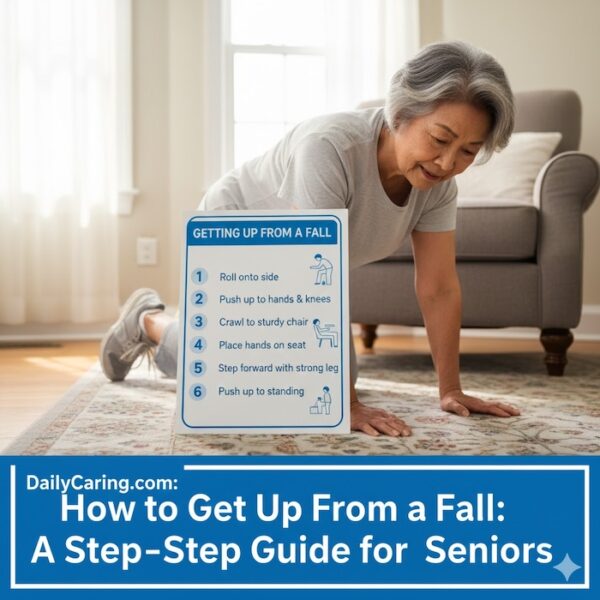
How to Get Up After a Fall Using Proper Techniques
According to the CDC, more than 1 in 4 people aged 65 and older fall each year. And, falling once doubles the chances of falling again.
Even worse, after an older adult falls, lying on the floor for a long time or getting up incorrectly could cause additional injury, even if they weren’t seriously injured from the fall itself.
For example, someone who isn’t able to get up or call for help may develop serious complications like dehydration, hypothermia, pneumonia, or pressure sores.
Another issue is that many people who fall, even if they’re not injured, become afraid of losing.
This fear could cause them to avoid everyday activities. And if they’re less active, they’ll become weaker, which then increases their chances of falling.
To combat this, seniors can proactively learn safe techniques for getting up from a fall.
Knowing what to do if a fall does occur and practicing ahead of time will give them confidence that they’ll be able to help themselves and minimize injuries.
We share a helpful 5-minute video demonstration of safe techniques for getting up after a fall, outlining the key steps for getting up or calling for help.
Safety Warning: Always Assess Injuries Before Moving
Seniors should only get up if they’re not injured or dizzy after a fall.
They should also feel strong enough to get up on their own.
If you find that your loved one has been injured in a fall, don’t move them right away – that could make their injuries worse.
Instead, consider calling 911, keep them as warm and comfortable as possible, and wait for emergency responders to arrive.
VIDEO: How to Get Back Up After a Fall
Step-By-Step Guide: Getting Off the Floor Safely
The video is helpful because it’s a step-by-step guide to getting from lying on the floor to safely sitting in a chair.
The demonstration of how to get up from a fall starts at 1 minute 35 seconds in the video. The video opens with a lengthy introduction and a disclaimer about liability.
In the demonstration, they first show how older adults can safely get up on their own. Then, they show how seniors can call for help if they’re injured and can’t get up on their own.
Seniors with severe health conditions or limited mobility should always consult their doctor or physical therapist for advice on what to do in case of a fall to prevent further injury.
How to get up from a fall when there are no injuries
- Stay calm and still. Don’t move for a few minutes because moving too quickly can cause more harm.
- Figure out if you’re injured. Slowly move your hands, feet, arms, and legs to check for pain.
- If there are no injuries, slowly roll onto your side, starting the movement with your head and moving down your body toward your feet. Take a moment to rest.
- Slowly push up into a crawling position and crawl slowly on hands and knees toward a sturdy chair or piece of furniture. Don’t rush and rest as needed. Place your hands on the seat of the chair, one at a time.
- Support yourself with the chair, bring your strongest leg up to a 90-degree angle by putting that foot flat on the ground. The other leg stays in a kneeling position. Slowly push up to standing using both arms and legs.
- Slowly turn around and sit down in the chair. Sit and catch your breath for a few minutes before doing anything else.
How to call for help when there are injuries
- Stay calm and take a few moments to rest. Figure out what parts of your body are injured.
- If you have one, use an emergency medical alert device or mobile phone to call 911 or a family member for help. Tell them about your injuries.
- If there’s a pillow nearby, put it under your head. If there’s a blanket or some clothing nearby, use it to keep yourself warm while you wait for help.
- If you don’t have a medical alert device or a phone nearby, start yelling for help. If you can’t scream, grab something nearby and use it to bang on the floor or on nearby furniture to make noise and attract attention.
Final Thoughts on Techniques for Getting Up Following a Fall
Remember, knowing how to get up safely isn’t about admitting defeat, it’s about empowering yourself or your loved one with confidence and control. Practicing this technique when you’re calm and safe can make all the difference in a moment of panic.
By staying in the moment, moving slowly, and following these steps, you can turn a frightening experience into a manageable situation. Keep this knowledge close at hand; it’s a simple skill that protects independence and provides priceless peace of mind for everyone.
Recommended for you:
- 10 Simple Fall Prevention Exercises Seniors Can Do at Home
- 10 Medications That Cause Falls in Seniors: Use with Caution
- 6 Age-Related Changes That Increase Senior Fall Risk
About the Author

Connie is the founder of DailyCaring.com and was a hands-on caregiver for her grandmother for 20 years. (Grandma made it to 101 years old!) She knows how challenging, overwhelming, and all-consuming caring for an older adult can be. She also understands the importance of support, especially in the form of practical solutions, valuable resources, and self-care tips.
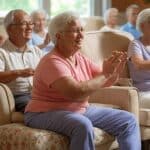









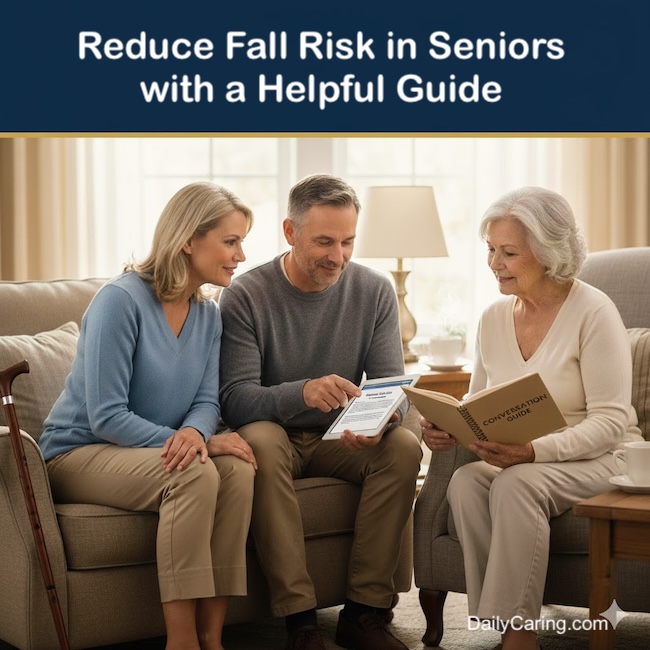
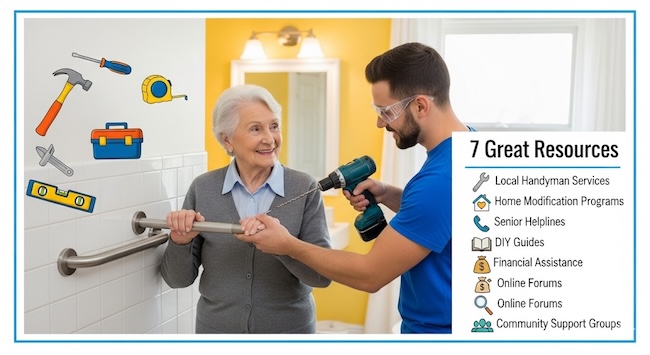
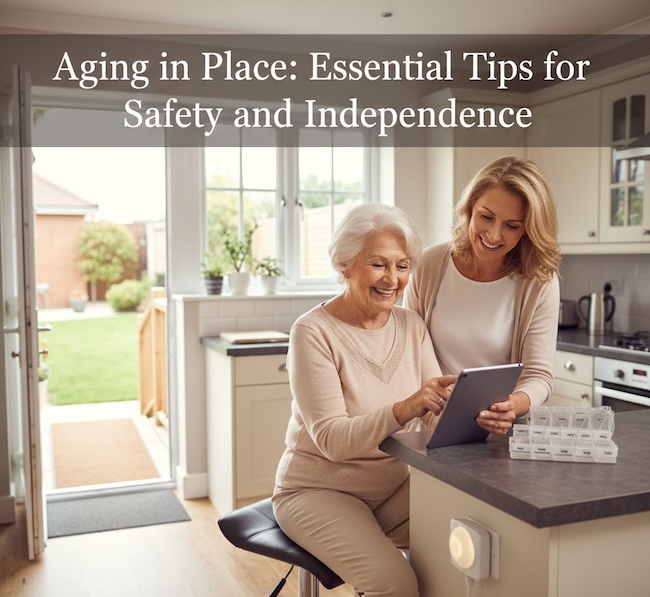
My 94 year old mother had 2 falls. She had Alzheimer’s and had no recollection of either. Her first fall resulted in a broken wrist , probably due to a fall in her home. She suffered silently for 2 weeks before we noticed that something was wrong. Mother had carers at this point but they were unaware due to mother’s memory deterioration. We took her to hospital where it was put in a cast and she subsequently suffered from carpal tunnel syndrome. Her second fall was in June 2022 outside her home. She was helped to her feet by her 94 year old neighbour who was fortunately in his garden. This incident resulted in her being hospitalised for 3 weeks with a small , treatable lower spinal injury. Whilst there, mother got Covid and was reassessed for capacity to self maintain. She was deemed inadequate and promptly admitted into a Care Home in August 2022. She had been living alone for the past 32 years. Mother died in December 2022 from a chest infection and Stage 5 Alzheimers. The point here is, if the fall is suffered by an Alzheimer or Dementia patient, they have no recollection of it, and are most likely in strong denial. My mother was in denial for 8 years of her diagnosis. She died 3 weeks short of her 95th birthday.
Thank you for sharing your mother’s story, we’re so sorry for your loss. It’s so true that someone with dementia might not realize they fell and won’t know to let anyone know or get treatment for injuries.
None of these solutions work for everyone I’m afraid. They rely on aids (chair, bed etc) or people which, as has been pointed out, are not always available. Shouting for help in an isolated place is useless.
I have fallen several times but fortunately I had a water botle with me so wasn’t dehydrated. My knees were very painful indeed but my best recovery tip was simply yo lie there until some of the shock had worn off. That way, a little strength came back to me body and I was able to pull myself forward, eventually, from the garage into the house. Still on the floor, I pulled the telephone down and rang for help. I was lucky, very lucky that help arrived within the hour. I had knocked my head too on the way down and had I been knocked out, I may have been there days.
If you are prone to falls, you need something which Isn’t going to tip forward when you grasp it (as chairs do) or something you can reach up to from the floor (bolted shelf, rope loop, ) so that when strength returns, if you haven’t injured your legs/knees, you can aid yourself upright.
Best of all, a personal alarm, worn at all times and programmed to alert someone.
Absolutely, no advice can cover every situation, but these are helpful in situations where helpful items may be nearby or for those who haven’t thought about how they could be used. It’s indeed lucky that you were able to get help quickly when you fell. For those who are prone to falls, getting a personal alarm is a great idea.
What if you fall say on the sidewalk and there is nothing to crawl or roll to for support. How can you just use your arms and legs without holding on to anything?
Helping yourself up (or to a phone) after a fall is useful if you’re alone and nobody is likely to find you soon. However, if you’re out in public, it’s likely that someone would see you or that you could yell for help to get someone to come over and help or call for an ambulance in case of serious injury.
I had both knees replaced so I can not kneel at all.How do I get up if I have ?nothing nearby to use
In that case, it may be safer for you to find a solution that allows you to call for help at any time, like always having a mobile phone with you or using a wearable medical alert device.
Thank you for your reply. However, I suffer from Dermatamyositis and the first area of one’s body which becomes disabled is the pelvic area, making even getting up out of a chair impossible. So we cannot rely on any leg support when flat on the floor. It takes a strong person to help one into a seated position by squatting. behind and pushing the person up. The helper then leans into one’s back and places his/her arms under the armpits, locking hands across the chest. The helper straightens his/her legs, hoisting one’s body up with him/her.
Each person has unique mobility issues, so the way that someone will be able to help you is different from how it would work best for someone else. However, it’s also very important to keep in mind that the caregiver or person providing the help needs to protect their body from injury as well.
The method you describe may work for you and the person caring for you, but it carries a high risk of injury. The person helping you is pulling you up using their shoulders and back, putting a great deal of strain on those muscles. Also, if they happen to lose their balance in the process or don’t have enough strength to complete the movement, they could fall and/or drop you — causing additional injury.
We’ve got a video that demonstrates safer techniques to use when helping someone move from one position to another — How to Help Seniors Get Up Without Injuring Yourself: Safe Transfer Techniques [Video] https://dailycaring.com/how-to-help-seniors-get-up-without-injuring-yourself-safe-transfer-techniques-video/
For your specific mobility limitations, it might be best to consult with a physical therapist to find out the best ways for someone to help you if you happen to fall.
I saw in a catalogue for the elderly some steps that could de used to help them crawl up after a fall.
That’s a great thought, though having a set of steps for that purpose would only work if they were near the area where someone fell. We’ve got a video that shows how to creatively and safely use nearby objects to make it easier to get up safely after a fall — https://dailycaring.com/video-get-up-from-a-fall-macgyver-style/